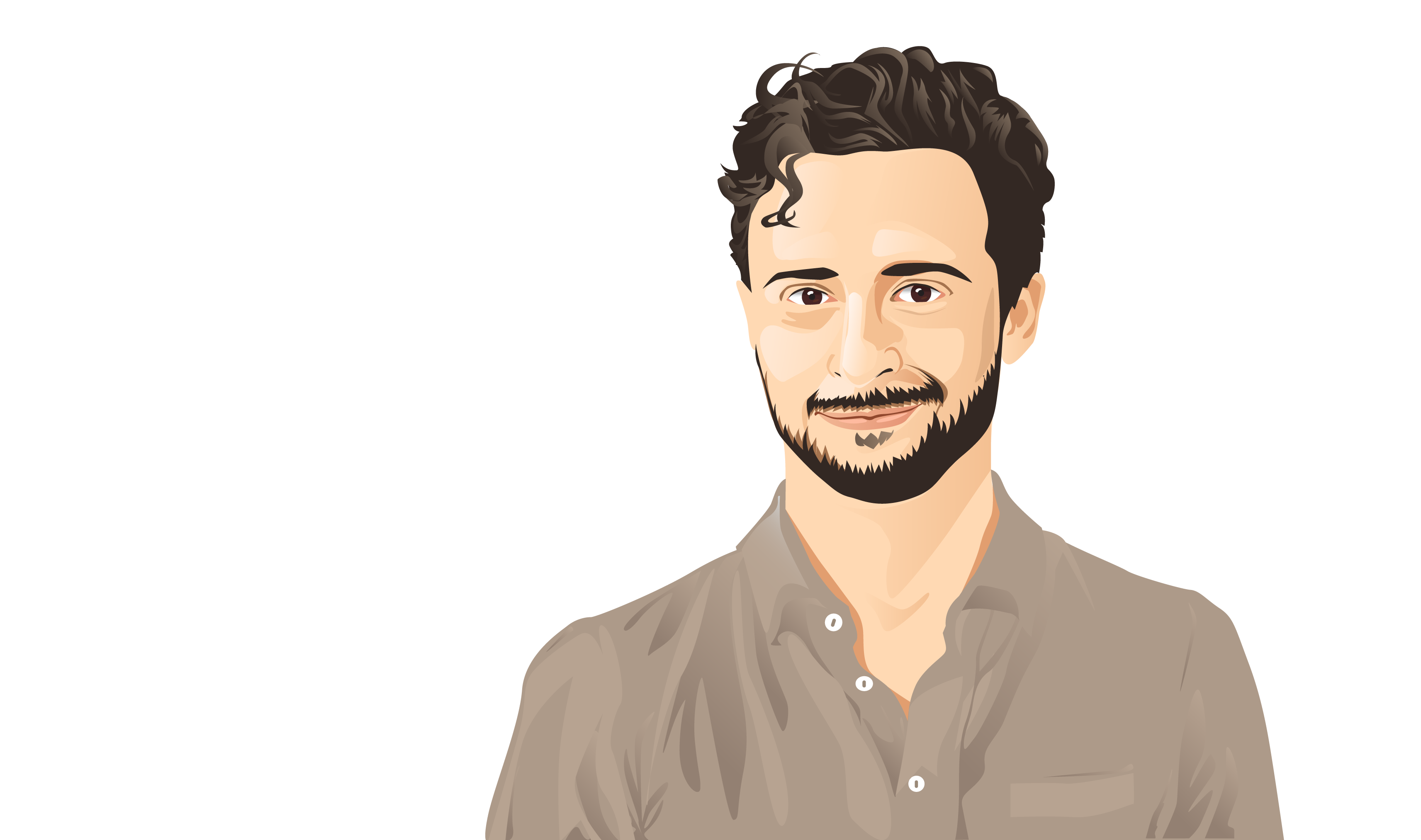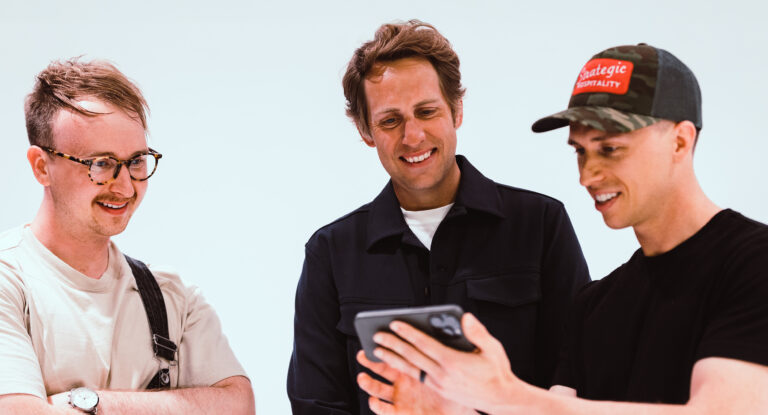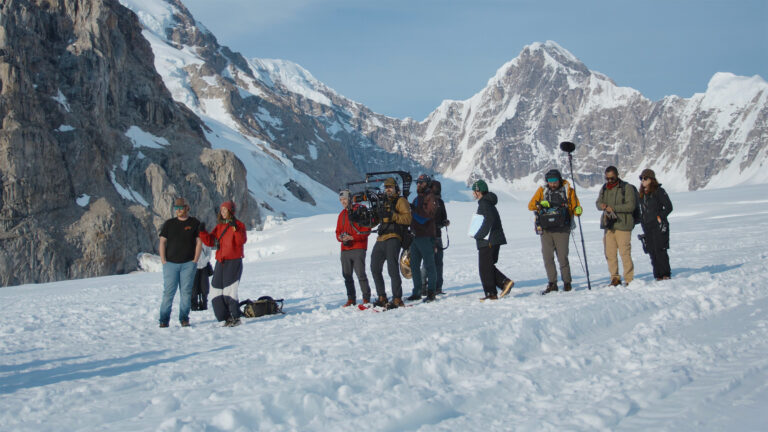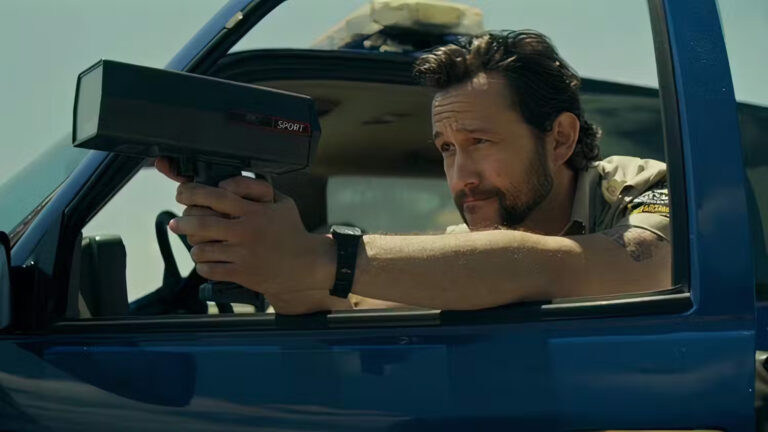As the editor for the Saturday Night Live Film Unit, Adam Epstein’s regular schedule is as hectic as it gets. Adam started at SNL in 2009 and has spent the last eight years feeding off that fast-paced energy to hone his skills and develop extremely efficient workflows. In Adam’s case, he had no choice but to adapt, but as he explains, you don’t have to work at SNL to develop these skills.
Adam has worked on many different types of projects — features, commercials and other television shows — but he credits the pressure-cooker environment of SNL for forcing him to constantly integrate new ideas into his editing process. Over the years, Adam combined technical and interpersonal skills to create an editing style that places a high value on efficiency, while never forgetting the human element of filmmaking.
The SNL digital shorts are shot just 24-36 hours before the show goes live on Saturday night. After the Friday shoot, Adam works alone from late afternoon until the early hours of the morning. He returns later on Saturday morning, and is always working right up until the last-minute to deliver the short on time with sound and effects. It’s a pretty intense schedule.
In this article, he takes a step back to examine how the extreme speed of the SNL schedule has grown him as an editor, and he also gives some ideas for how anyone can develop those same skills.
First, let’s take a look at what 8 years at SNL has done for Adam.
“It’s changed what my ‘normal’ speed is.”
“It’s hard for me now to be lackadaisical,” Adam says. “Just by doing the repetitions at a place like SNL for so long, it makes your normal speed faster, which is beneficial. It’s like running with weights on your legs. When you take them off, you feel lighter and faster. That translates over to other work outside of the show.”
Working quickly is like weight training for the editor. But beyond the obvious advantage that the ability to work quickly simply allows you to get more projects done, it can also have serious career implications.
“It hopefully gives everyone in the room a sense of confidence”
Working well but also quickly makes you seem much more valuable to clients and producers. In an industry where time really is money, you never want anyone in the room to feel like they’re waiting on you to catch up.
“When you’re in the room with a director, with the producer, with an agency, the less time that they see you rooting through stuff – digging into your organization, pressing buttons – the more it can be free-flowing, it puts them more at ease. You’re hearing what they’re thinking and reacting to it with as little lag as possible. It’s beneficial to the process and to the creative vibe overall.”
It Makes You Anticipatory Instead of Reactionary
Another less-obvious advantage of speed-editing skills is that, when you’re in the room with a client or another creative, you can throw together ideas as they come up. Adam phrases it as, “being anticipatory is sometimes better than being reactionary.”
There’s a certain magic in the moment when you’re in the room with a client, you throw together a cut, and you hear the “Oh, yeah! that’s what I was thinking!”
When clients or producers are around, Adam is always feeling the room. “Even when they’re not specifically giving me notes, I’m just listening to what they’re talking about beforehand to kind of anticipate where they’re going to be going.”
“As opposed to waiting until someone says, ‘hey, let’s do this,’ put a little guesswork into the direction you think they’re going, get out ahead of that, and then when you say, ‘hey, how about this?’ it gives them the feeling that you’re on the same page.”
That’s what Adam calls being anticipatory. “If you can anticipate that, work-wise, and then if you’re quick enough to keep up with it, that just lets everything run smoother.”
And in order to be anticipatory, you have to be fast.
Even if your quick cut takes the edit in the wrong direction, there is an enormous benefit in finding that out in the moment, instead of at the next meeting. This can improve the greater decision-making process in a way that makes your influence feel organic, rather than forced. A free-flowing process benefits everyone, and as an editor, thinking a step ahead of the group creatively helps you push the project in a positive direction.
It Teaches You to Trust (and Train) Your Instincts
“Hard deadlines force decisions to be made more based on ‘because we think it was working.’”
Every editor needs to learn how to make important edit decisions based on an intuitive sense of what will work and what won’t. As Adam says, “A lot of times people ask me, ‘why did you cut here?’ I can look at it after the fact and break it down cut for cut, but in the moment when I’m doing it, it’s much more based on, ‘I just think that this feels good. It feels right.’ It’s way more instinctual than technical.”
But how do you develop that instinct? By exercising it, and a fast-paced editing environment forces you to do just that.
“When I’m working on a commercial project at PS260, if they shoot 12 different endings, we’ll often try every ending, and then get client feedback and reactions on a bunch of them.” According to Adam, that kind of process isn’t necessarily a bad way of working, but it can lessen the instinctual element of the decision-making process.
At SNL, however, there isn’t time for any of that. “I get to have the gut instinct that, ‘oh, this one made me laugh’ or ‘this made the room laugh,’ and then because we only have an hour, that’s what we’re going to do.”
Years of making those quick calls while working with a very talented team of directors, writers, and producers has helped Adam develop his gut instincts for which cut is going to work.
How to Develop and Apply These Skills
While Adam had the external pressure of his job at SNL to push him to refine his skills, you can very easily to build them yourself. Adam often sets artificial deadlines on his work outside of SNL.
“I’m a big fan of self-imposed deadlines.”
Whatever deadline your client gives you for a project, try cutting it in half. If you have two weeks, operate as if you need to hand off that work in one week. Not only will this help you develop both your efficiency and intuition, it also gives you time to add some finishing polishes, if necessary.
It might not be fun the first time, but you’ll be growing as an editor. “It’s a weird paradox that, when you know that something has a hard end to it, it forces you to be less ‘precious’ about your decisions and just power through where you’re working more on gut.”
Sticking to extreme deadlines also makes you learn how to use good project organization. Being organized is clearly important if you’re going to work quickly, but it also makes you look far more professional to your colleagues and clients. Disorganized editors or assistants rarely make for top-rate team members.
Start, Finish, and Move On
“A lot of times, people are just starting out, they want their first project or their first short to be a ‘perfect thing’. To me it’s more important to show that you can start and finish something.”
So get out and shoot, give it your best, and then finish it and keep going. The time spent endlessly tweaking one project would be better spent on developing a deeper body of work, gaining new experiences. “When editors are starting out, the key is to start something and complete it,” Adam says. “Show that you completed something, and then you can move on to the next thing.”
“When editors are starting out, the key is to start something and complete it”
If you keep starting projects but don’t finish them, then you’re missing the point of the self-imposed deadline idea. The pressure to finish the project, even if it’s not perfect, is what will grow your skills as an editor. The hallmark of the wannabe filmmaker is to be always working on something but never finishing anything.
If you have trouble hitting your deadlines…
Be Accountable
Not everyone has the self-discipline to actually hit those deadlines, and that’s ok. In that case, it can help to put your projects online, so that your friends can keep you accountable. Adam told a story of a friend of his who had a project that he called “Stretch Daily” where he built in some of his own accountability, “Every day I’m going to make a ‘thing’ that I have to put on my website.” Not a lot of rules, but it helped him to creatively stretch in new ways.
Not everything you publish has to be amazing, but you might find the internet surprisingly supportive of your work if they learn that you’ve set an ambitious goal.
So pick a deadline, and a regular pattern – perhaps, you decide to publish one short film per week. Set up a YouTube channel (you don’t have to use your real name) and force yourself to post something by your deadline every week, regardless of whether you’ve polished film to your liking or not. The looming pressure of publishing incomplete projects will increase your drive, and bring a sense of urgency to your work. You might even enjoy it 🙂
Optimize Your Edit
If you’re going to start hitting your new deadlines, you’re going to need to get serious about cutting quickly. On the technical side, Adam increased his speed by shifting his focus to the keyboard. “I learned a long time ago — especially when I started on Avid — I like to be as keyboard-based as possible,” Adam explains. “I try to be as left-hand based as possible. I use the shift-command-control option keys as modifiers for everything. With modifier keys, it lets me get the entirety of a keyboard with one hand.” With his custom left-hand keyboard shortcuts, Adam’s right hand is free to simultaneously operate a Wacom tablet.
There isn’t a single best way to configure the keyboard for editing, and it’s certainly platform-dependent. What Adam does works for him, but the point here is that he has learned, through experimentation, what is the most efficient way of navigating the interface for him. We won’t attempt to cover all of the ways to edit with the keyboard, but Google reveals all.
Stretch and Adapt
One of the great benefits of the SNL schedule for Adam is that he’s always working on something new and different, and that opens many ways to try new styles and techniques. One of the many benefits of the work-fast approach is that you move from project to project quickly, and each new project is a fresh start to try something new, or learn from someone else. Keep your mind open to the idea that there’s a better, faster way to do nearly everything, and incorporate those aspects of other editors’ work into your own approach.
Adam’s workflow and habits when editing have come from years of trying different approaches, working with different people, and learning from them. Instead of creating a single go-to setup and sticking with it, Adam tries to integrate fresh techniques. Adam says examples range from, “I liked the way this guy uses extend edits versus trim mode,” to “the way this person sets up a custom timeline when they’re doing sound design.”
Freedom
If there’s one thing Adam Epstein learned over his eight years (and counting) at SNL, it’s that he thrives under pressure. “That’s the nice thing about SNL. Even if it’s a late Friday start, I know what we’re working on right now is going to be on television tomorrow night at this time.”
“Even though that can be intense, it’s almost freeing in a way.”




